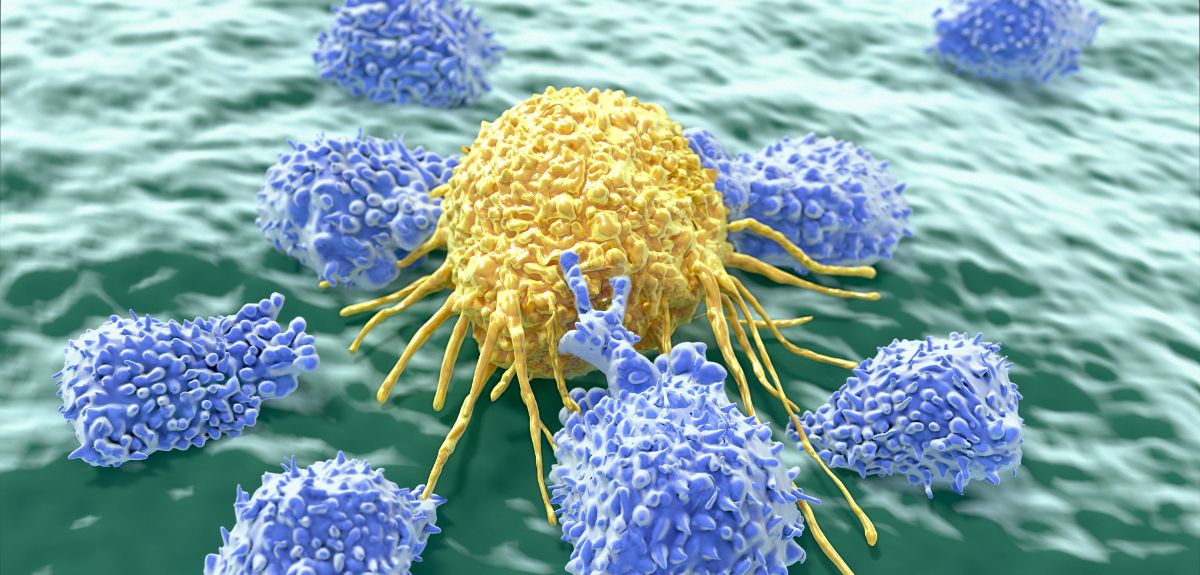
Oxford University researchers have found a way to detect ovarian cancer early and identified an enzyme that is key in making ovarian cancer more deadly.
Their results, published in two journals and co-funded by the NIHR Oxford Biomedical Research Centre, provide new research routes for scientists trying to detect and beat the disease.
Ovarian cancer is the fifth most common cancer for women in the UK, with about 7,100 new cases each year.However, it can be difficult to diagnose because it grows virtually unseen into the abdominal cavity. If detected early enough, ovarian cancer responds well to chemotherapy. However, once it metastasizes (spreads) it becomes resistant to chemotherapy and far more likely to kill.
In their first paper, in the online journal EBioMedicine, the Oxford team show that levels of a protein called SOX2 are much higher in the fallopian tubes of people with ovarian cancer and also in some people who are at high risk of developing ovarian cancer such as those with inherited mutations in BRCA1 and BRCA2 genes.
Professor Ahmed Ahmed, from the MRC Weatherall Institute of Molecular Medicine at Oxford University, said: “Ovarian cancer can be undetectable for up to four years and only a third of people with the cancer get an early diagnosis. A test for SOX2 could not only help detect cancers early but in some cases would enable us to detect a tumour before it becomes cancerous. Early treatment hugely improves the odds for patients, so early detection is essential. However, there is still a lot of work to be done because detecting SOX2 in the fallopian tubes is not an easy task.”
In the second paper, in Cancer Cell, the team identified an enzyme that enables ovarian cancer to spread. When ovarian cancer spreads, it usually does so to the omentum, an apron of fatty tissue covering the small intestine. The most common cause of death in ovarian cancer patients is malnutrition as the growing cancer obstructs the intestines.
Professor Ahmed explained: “The omentum is rich in adipocytes – fat cells – and previous research found that the free fatty acids produced by these cells increase the spread of cancer.
“However, we have found that ovarian cancer could only proliferate – grow – in the presence of an enzyme called SIK2, which has a role in ‘burning’ fat to produce energy that is needed by the cancer cells to survive in the omentum.
“We continued this study of SIK2 and found that levels of the enzyme were higher in secondary tumours in the omentum than in the related primary tumours in the ovaries.”
A series of experiments confirmed that SIK2 not only played a key role in growing ovarian tumours, but in the metastasis that spreads them to the omentum, where they become so much more deadly. Further experiments revealed the processes, know to medical researchers as ‘pathways’, involving SIK2 that support the development and spread of ovarian cancer.
Professor Ahmed said: “SIK2 is an important target for future treatments because it provides cancer cells with energy and also drives their increase in number. Our experiments showed that suppressing SIK2 disrupted these pathways, which in the human body would reduce the possibility of cancer cells spreading and ‘coming back’.”
Lord Maurice Saatchi, who campaigns for better access to cancer treatment, said: “By explaining these very detailed processes, the Oxford team are providing maps for researchers working on ways to treat and defeat cancer. The more we understand, the closer we come to beating not just ovarian cancer, but all types of cancer.”
Katherine Taylor, Chief Executive at research charity Ovarian Cancer Action, one of the study’s funders, said: “We need to save the lives of more women by making ovarian cancer treatment more effective. There has been little progress in ovarian cancer treatment in the past 30 years so these findings are promising, and have provided two areas of focus for scientists working on ovarian cancer. Early detection and effective treatment are vital, and these discoveries will hopefully being us closer to both.”